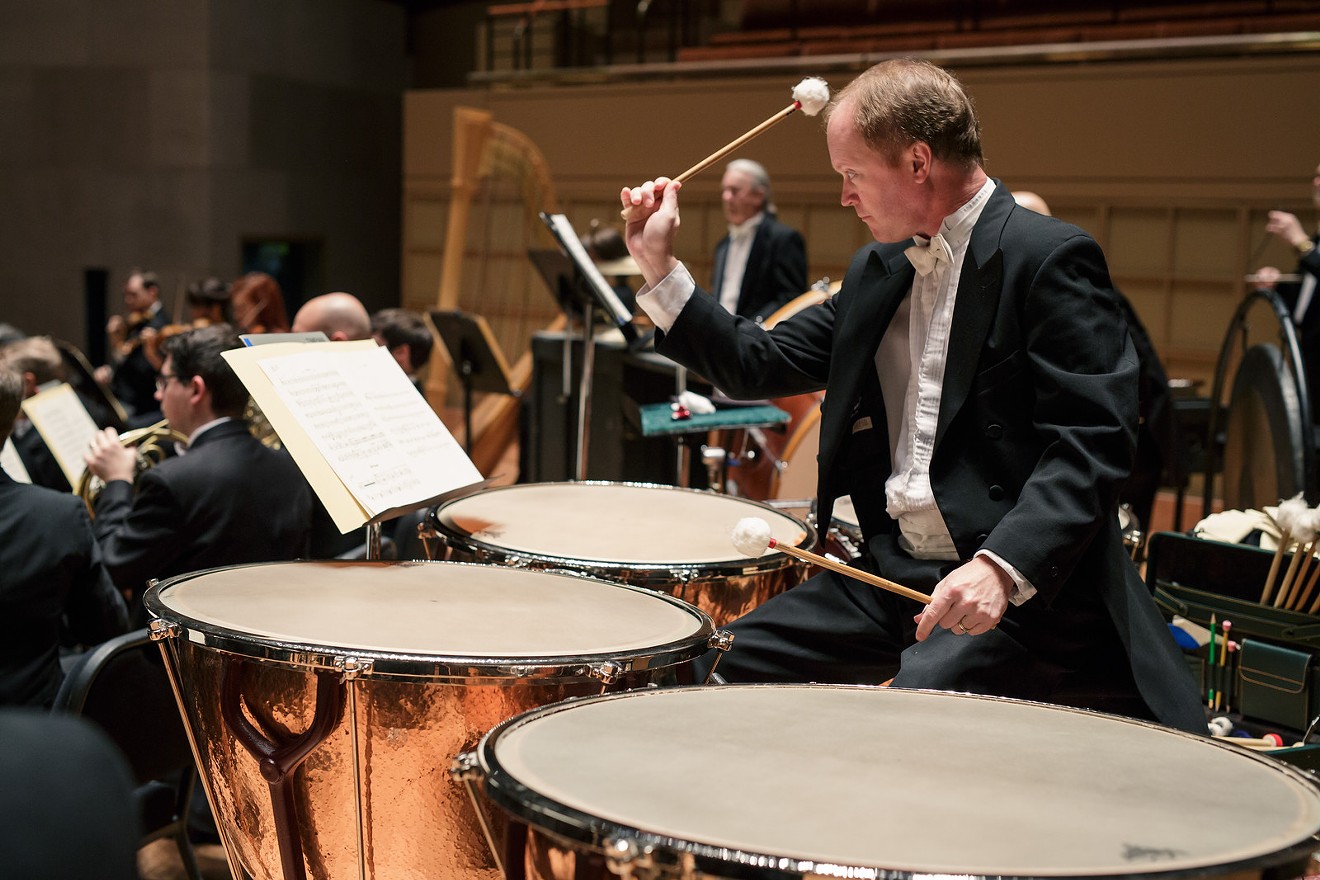That changes this weekend, when the Dallas Symphony premieres a new concerto for timpani, which puts the drums at the forefront of the orchestra. Written by Steven Mackey for the DSO’s Brian Jones, the concerto puts percussion in the driver’s seat and gets the whole orchestra in a groove.
“I learned as a rock guitar player that your band is only as good as your drummer,” Mackey explains, alluding to his early days as a guitarist in California bands. He’s given most of the melodies in the work to the orchestra, but Jones and his drums will act as leaders, setting rhythms, building grooves, driving the orchestra into frenzies and interrupting proceedings.
“The timpani may not be able to sing a beautiful melody, but one thing it does better than any other instrument is interrupt the orchestra,” Mackey says.
He’s added another interesting wrinkle: Jones isn’t just playing drums with mallets. There are wine glasses, bouncy balls, tennis balls and a kalimba to reckon with, too. Dropping a tennis ball on the drum, for example, produces a louder version of that familiar bouncing, accelerating rhythm.
Resting wine glasses on the timpani, Mackey says, creates “these weird ghostly sounds.” He also discovered that rubbing the drums with a Super Ball — that most destructive of childhood toys — can produce a “multiphonic screech.”
“I’m kind of a hands-on composer,” Mackey says. “Even though I’m not a percussionist myself, I have a lot of junk in my basement that I like playing with.” That basement-junk approach is what will lead, this weekend, to the sight of Jones onstage at the Meyerson Symphony Center, balancing wine glasses and dropping tennis balls to create new sound effects.“One of the tipping points that made me excited about this piece was to make the orchestral part really rich and exciting, so that the timpanist is still featured but as the driving force behind a whole rich orchestra sound.” — Steven Mackey
tweet this
Mackey says Jones, a University of North Texas graduate who has been the DSO’s principal timpanist since 2011, is up to the challenge.
“He’s a really good pedaler, so he can change pitch quickly and accurately,” the composer says. “He’s got good division of limbs, sort of polyrhythms. I’ve got him playing one tempo in one hand, another rhythm in the other hand, with both feet changing the pitch.”
Jones and Mackey worked together to make sure that the piece is playable, and the soloist has been practicing his part for almost a year.
There aren’t a lot of timpani concertos in the world. The best, maybe, is a 2015 work by Finnish composer Kalevi Aho, but Aho didn’t search his basement for Super Balls and kalimbas to lighten up his rather gloomy sound world. Carl Nielsen’s “Inextinguishable” Symphony reaches a spectacular climax with a duel between two timpanists whose drums are stationed at opposite ends of the stage.
But mostly Mackey felt free to invent a whole new set of rules for the DSO-commissioned piece.
“One of the tipping points that made me excited about this piece was to make the orchestral part really rich and exciting, so that the timpanist is still featured but as the driving force behind a whole rich orchestra sound,” Mackey says. “There’s not that much a timpani can do as a soloist, but at the center of a glorious sound, a glorious groove, the timpanist is still featured, but it’s kind of more than what he can do on his own.”
The rest of the Dallas Symphony’s weekend program includes Claude Debussy’s two most popular orchestral works, the softly impressionist Prelude to the Afternoon of a Faun and more colorful La mer, along with the Dallas premiere of a piece, Rainphase, by 26-year-old New Zealand composer Salina Fisher.
Another New Zealander, DSO Principal Guest Conductor Gemma New, leads the performances. Concerts take place Friday and Saturday night and Sunday afternoon.












